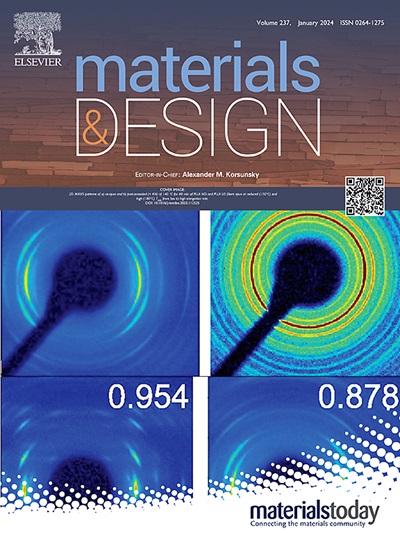Interfacial adhesion between dissimilar thermoplastics fabricated via material extrusion-based multi-material additive manufacturing
IF 7.6
2区 材料科学
Q1 MATERIALS SCIENCE, MULTIDISCIPLINARY
引用次数: 0
Abstract
Multi-material additive manufacturing (MMAM) enables the design of materials with tunable mechanical performance by fabricating multiple dissimilar materials in a single print. MMAM has been utilized to fabricate components with unique mechanical properties for applications such as damage detection, medical devices, sensors, and soft robotics. However, the bonding strength between dissimilar polymeric materials strongly depends on the material combination and is typically lower than the material strength of the constituents. This study investigates the interfacial adhesion between two thermoplastics fabricated via material extrusion (ME)-based MMAM by quantifying the interface bonding strength using mechanical tests and polymer adhesion theory-based correlation analysis. Experimental results showed that the polylactic acid (PLA)-polyethylene terephthalate glycol (PETG), PETG-polycarbonate (PC) and PLA-PC material combinations exhibit bonding strengths that are close to or exceed their constituent’s material strength. Material combinations that include polypropylene (PP) and polyethylene (PE) exhibited bonding strengths of nearly two magnitudes lower than those of PLA-PETG, PETG-PC, and PLA-PC. The microstructural images of the samples showed that the most compatible combinations exhibited a smooth, gradient interface indicating the importance of nano-scale adhesion mechanisms. Based on Hansen solubility parameters and the coefficient of thermal expansion (CTE), we observed the correlation between wettability and physical adsorption, intermolecular diffusion, thermal stress, and the interface bonding strength. The wettability and physical adsorption feature extracted from the solubility parameters showed the highest correlation with the interface bonding strength. Furthermore, we observed that the smaller the difference in solubility parameters and CTE between two thermoplastics fabricated via ME, the more compatible the two thermoplastics are.

求助全文
约1分钟内获得全文
求助全文
来源期刊

Materials & Design
Engineering-Mechanical Engineering
CiteScore
14.30
自引率
7.10%
发文量
1028
审稿时长
85 days
期刊介绍:
Materials and Design is a multi-disciplinary journal that publishes original research reports, review articles, and express communications. The journal focuses on studying the structure and properties of inorganic and organic materials, advancements in synthesis, processing, characterization, and testing, the design of materials and engineering systems, and their applications in technology. It aims to bring together various aspects of materials science, engineering, physics, and chemistry.
The journal explores themes ranging from materials to design and aims to reveal the connections between natural and artificial materials, as well as experiment and modeling. Manuscripts submitted to Materials and Design should contain elements of discovery and surprise, as they often contribute new insights into the architecture and function of matter.
 求助内容:
求助内容: 应助结果提醒方式:
应助结果提醒方式:


